Video Rewind tells the behind the scenes stories of VHS favorites from the video store era, one rental at a time! Press play and adjust your tracking, this month’s movie is “Krull” (1983).
The old was meeting the new in the Hollywood of the 1980s. Epics from director David Lean and producer Cecil B. DeMille, along with B movie science fiction and swashbuckling adventure fare from the 1950s and ’60s, were showing their influence on the next generation of filmmakers. But with the passage of time came new technology and bigger budgets. Steven Spielberg gave birth to the summer blockbuster with the record breaking Jaws in 1975, while George Lucas changed movies forever two years later with the outer space epic, Star Wars.
The old school adventure movie met the big budget blockbuster in 1981 with Raiders of the Lost Ark and Excalibur. In 1983, the big 1950s officially merged with the big 1980s, blending the aesthetic of classic sword and sandal epics with the special effects heavy outer space saga.
Krull was described by Variety as “Excalibur meets Star Wars,” an ambitious, world building, sword and sorcery epic that was one of the most expensive films ever produced at the time.
Director Peter Yates had his breakout picture in 1968 with Bullitt starring Steve McQueen, which has one of the most thrilling car chase sequences ever put on screen.
Perhaps his time as a professional race car driver provided Yates with the extra insight to shoot such a sequence. The real interesting part, however, is that it was Yates’s car chase in 1967’s Robbery that convinced McQueen to request that Yates direct Bullitt.
Robbery has long fallen into the dust bin of film history, while the legend of Bullitt still looms. Then again, Robbery didn’t star Steve McQueen.
Yates was hired by producer Ron Silverman to direct a script called The Dragons of Krull, written by Stanford Sherman and to be released by Columbia Pictures. With the idea of dragons later cut, the title was shortened to just Krull, the name of the planet where a dark alien force invades and is pursued by a prince and his band of companions after the princess is kidnapped. Yates had the cast do a read through of the script prior to filming, a process usually designated for television shows. The director wanted the cast to experience the film as a whole, and to understand the world within it so they could know the motivations of their character.
With the cast acquainted with the material and each other, filming began on January 25, 1982.
The opening shot has a strong Star Wars vibe.
First, the spaceship — with jagged, rocky edges surrounding a purple glowing center looking like something out of The Dark Crystal — cruises directly towards the camera. Then the famous Star Wars shot, with the spaceship slowly entering the frame amid the blackness of space peppered with white, distant stars. Instead of a scrolling text before the spaceship enters the frame like in Star Wars, it is here where Krull sets up its story with a narrator describing a prophecy.
“A girl of ancient name that shall become queen, that shall choose a king, and that together they shall rule their world, and that their son shall rule the galaxy.”
The jagged, rocky spaceship from the opening shots is called the Black Fortress, ruled by the Beast and his army of Slayers. The queen and king from the prophecy is Princess Lyssa (Lysette Anthony) and Prince Colwyn (Ken Marshall), who plan to marry. The marriage is an alliance between their two kingdoms, an effort to form a “single kingdom” to defeat the Beast and his planet-killing Black Fortress. While the fathers of Princess Lyssa and Prince Colwyn view themselves as rivals, they are willing to work together for the good of the land. The bride and groom to be, Lyssa and Colwyn, seem genuinely happy with the idea of marrying each other.
Lysette Anthony’s flowing red hair matches the rocky red landscape of her kingdom, as do her blue eyes rival the skies above her castle.
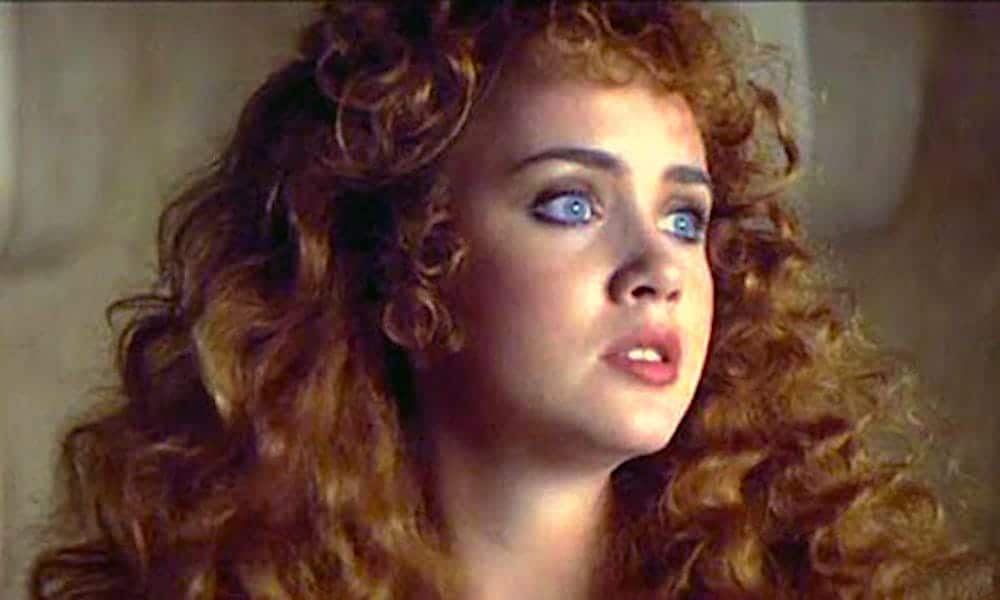
Her beauty has a timeless quality, at once medieval, French New Wave, and girl next door. Famed London fashion photographer David Bailey pinned her beauty to the decade, dubbing Anthony, “the face of the ’80s.” Such an appearance grants the character of Lyssa a deeper magic than she already possesses (being able to draw fire from water), and makes Anthony perfectly suitable for the role.
It’s a shame then that the actress wasn’t able to complete the performance with her own voice, as Columbia Pictures president Frank Price determined an American accent would help with ticket sales in the States (the voice is Lindsay Crouse).
As for David Bailey’s declaration, Anthony would go on to appear in five music videos for Bryan Adams including “Heaven,” “Run to You,” and “Summer of ’69” (remember the girl he met while spending his “evenings down at the drive in?” That’s her in the video). She would also pose nude for Playboy magazine in December of 1988. Rock videos and Playboy? That’s about as ’80s as it gets.
Before the uniting of the two kingdoms of Krull is complete, Lyssa and Colwyn’s wedding is interrupted by a group of attacking Slayers. The two kings are killed in the attack, and Lyssa is kidnapped, leaving Colwyn responsible to defeat the Beast and rescue his almost new bride. Effects and makeup artist Christopher Tucker (The Elephant Man) was originally hired to design the Slayers and other creatures of Krull, but left the project citing creative differences. With a mere six weeks before filming was scheduled to begin, concern was rising as production became rushed.
Nick Maley (Superman, The Empire Strikes Back) was hired to replace Tucker on effects.
“At the time I was hungry and wanted to make my mark. So I took the job,” said Maley.
With such a limited pre-production time, Maley and his team assembled a list of makeup and effects techniques that were considered ambitious for the time. Maley was also tasked with designing the Slayers just 10 days before principal photography began. In a bit of a panic, Maley assembled two teams to work on creating suits for 20 Slayers. Working 24 hours a day in 12 hour shifts, the two teams pulled off the monumental task, much to the delight of the production company.
One prop that Maley didn’t have time to finish was a physically transforming Changeling Claw, but the prop was later completed and used in Tobe Hooper’s Lifeforce in 1985. Maley’s efforts are not only seen on the screen, but caught the attention of legendary makeup artist Dick Smith (The Exorcist, Scanners), sparking a lifelong friendship until Smith’s death in 2014.
Only 20 minutes into Krull and Colwyn already suffers the death of his father and the kidnapping of his bride-to-be. It’s a rough wedding day for them both to say the least. Colwyn is found by Ynyr (Freddie Jones), a wise old man who informs Colwyn that the Beast can only be defeated by a mysterious weapon called the Glaive, a magical, circular throwing star. Like any hero would, Colwyn finds the Glaive hidden in a cave high atop a mountain. Holding the weapon in his hand, Colwyn is now ready to find the Black Fortress, defeat the Beast, and save Krull.
Ken Marshall was coming off a successful turn as the 13th century explorer in the TV mini-series Marco Polo when he was cast as Prince Colwyn.
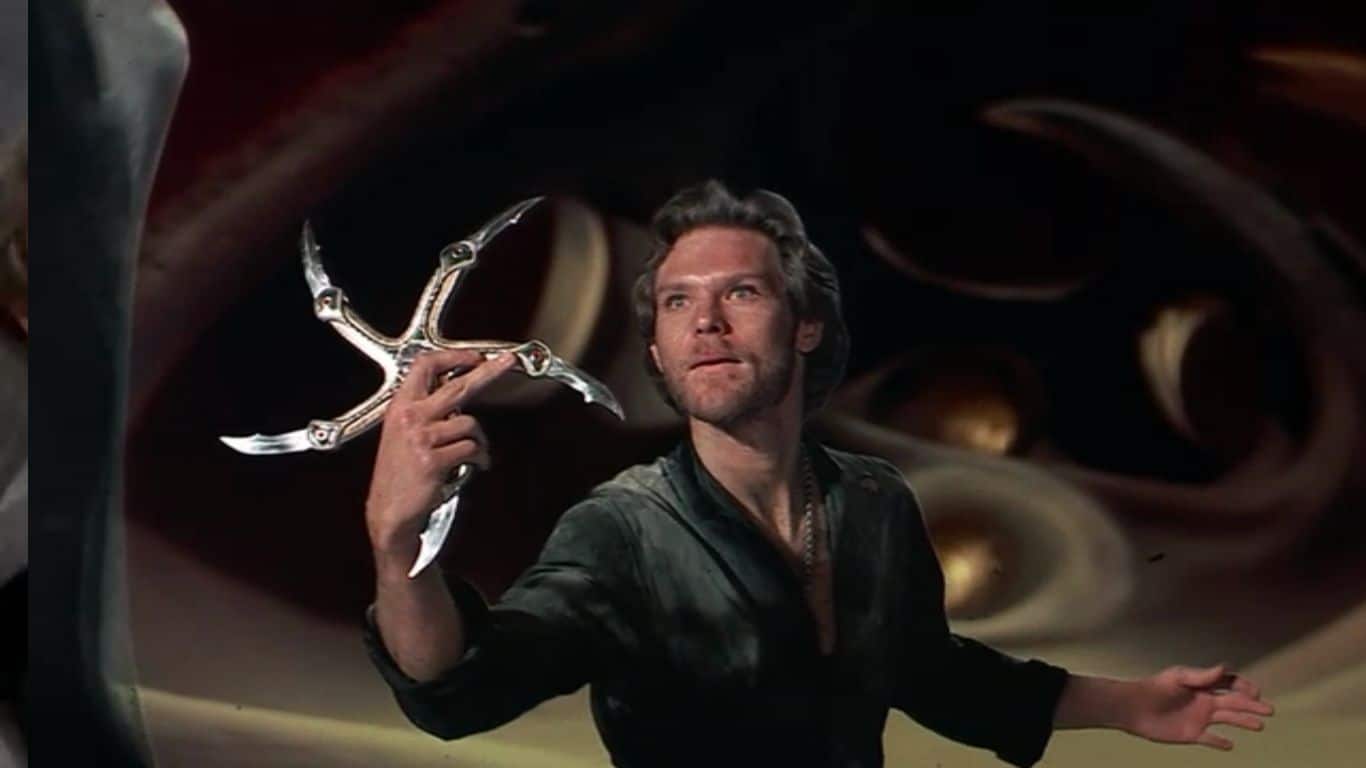
Marshall worked out for weeks prior to filming Krull, taking lessons in horse riding, fencing, and boxing.
The idea was to have Colwyn’s moves appear seamless and well learned, as well as to have Marshall be in shape to perform his own stunts. While Marshall had that cocky yet charming look of Harrison Ford, he lacked the magnetism to be a big star and would never headline another motion picture after Krull. His career would turn to television with numerous appearances on popular ’80s and ’90s TV shows such as In the Heat of the Night, Baywatch, Quantum Leap, Silk Stalkings, and Star Trek: Deep Space Nine, for which he earned a 1997 OFTA nomination for Best Guest Actor.
Prince Colwyn and Ynyr encounter a group of outlaws on their search for the Dark Fortress, and convince them to join the fight against the Beast. Among the outlaws are early career appearances of Robbie Coltrane (Hagrid in the Harry Potter movies), and Liam Neeson. Neeson has a rugged handsomeness with a confident swagger in his small role. Watching him alongside Ken Marshall, it’s hard not to think how much stronger Neeson would have been in the lead role of Colwyn.
Marshall is acceptable enough as the young hero, but he lacks the effortless charm and likability that an actor like Neeson has. Knowing the star that Neeson went on to be makes it easy to see this in hindsight, but the screen presence of Neeson even this early in his career is evident, and your eye can’t help but be drawn to him.
As Colwyn and his gang journey through the lands to find the Beast, the script for Krull allows for built in adventure, with the Dark Fortress able to instantly move to a new location every day at sunrise.
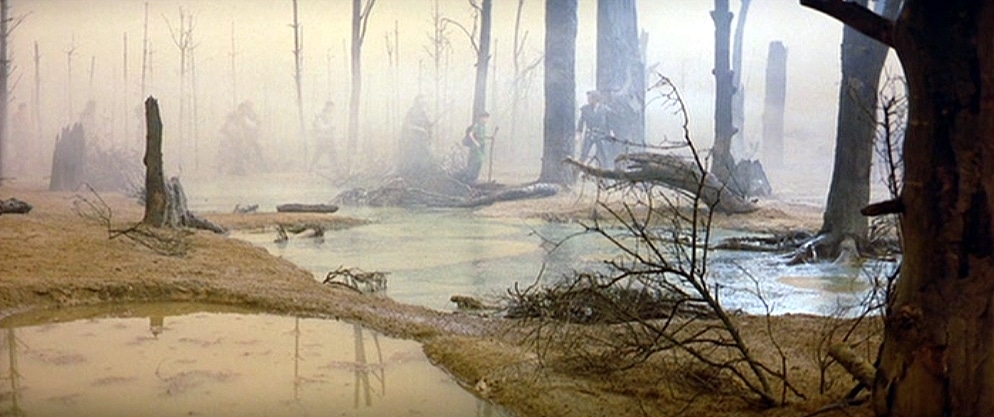
“Sometimes it is in the mountains, sometimes in the desert, sometimes in the sea,” explains Ynyr, “never in the same place twice.”
This ability allows the script to take Colwyn on many adventures across several grand locations. Production designer Stephen Grimes created Krull to be an “attractive” planet, one that would be accepted by the audience. A lot of locations are reminiscent of Earth, while others are fantastical destinations, familiar yet exotic. Such places include dark, dense forests, sweeping countryside grasslands, and expansive mountain vistas filmed in several locations across Spain, Italy, and England.
As for the constructed sets and more otherworldly places of Krull, Peter Yates and Stephen Grimes spent almost a year in pre-production endlessly storyboarding and drawing up set piece ideas.
The production crew occupied 10 sound stages and built 23 different sets at the United Kingdom’s iconic Pinewood Studios. The largest recording stage on Earth, the 007 stage (home to the James Bond movies), was turned into a gigantic, exterior swamp complete with a quicksand mire.
The production would film at Pinewood Studios for four straight weeks after hundreds of construction crew spent five months building the planet of Krull.
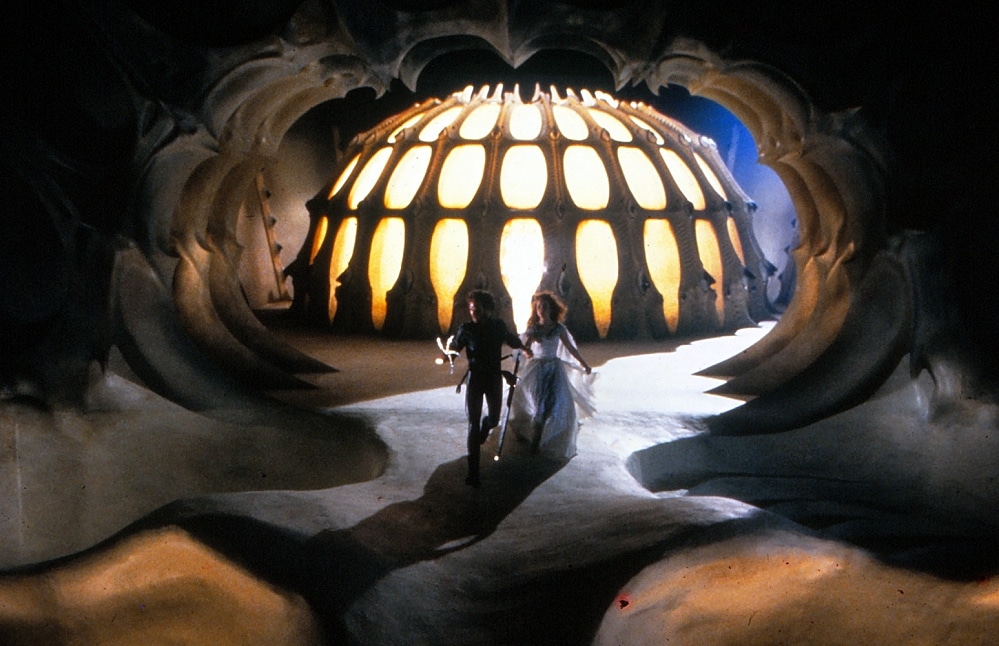
Colwyn and the group of men continue their search for the Beast, coming to the home of the Emerald Seer. The seer looks into his crystal to see where the Black Fortress will appear next, when suddenly the hand of the Beast comes up from the smoke surrounding the crystal and crushes it in its grasp! The group is now attacked by Slayers, and only after a few men are killed in the battle, the men escape to a nearby village to rest. Ynyr, the most valuable ally to Colwyn, is the only one who knows how to find out where the Black Fortress will next appear.
Ynyr leaves the resting group to find the Widow of the Web, in what is perhaps the best set piece in the film.
The Widow of the Web is an enchantress that has been banished to the lair of the Crystal Spider, a punishment for murdering her only child. The Widow is the long ago love of Ynyr’s life, and the child she murdered was theirs. The only thing protecting the Widow from being eaten by the Spider is the red sands that constantly flow through her magic hourglass. It is with great difficulty that Ynyr now seeks her out, in regards to both his still broken heart and the life threatening danger of the Crystal Spider. Injured by the spider, Ynyr reaches the Widow in her cocoon, now an old, withered woman bogged down by the weight of eternal sadness and regret.
The beautiful Francesca Annis was only 36 when she played the aged Widow of the Web, a flawless beauty perfect for when Ynyr sees her as the young woman he once loved.
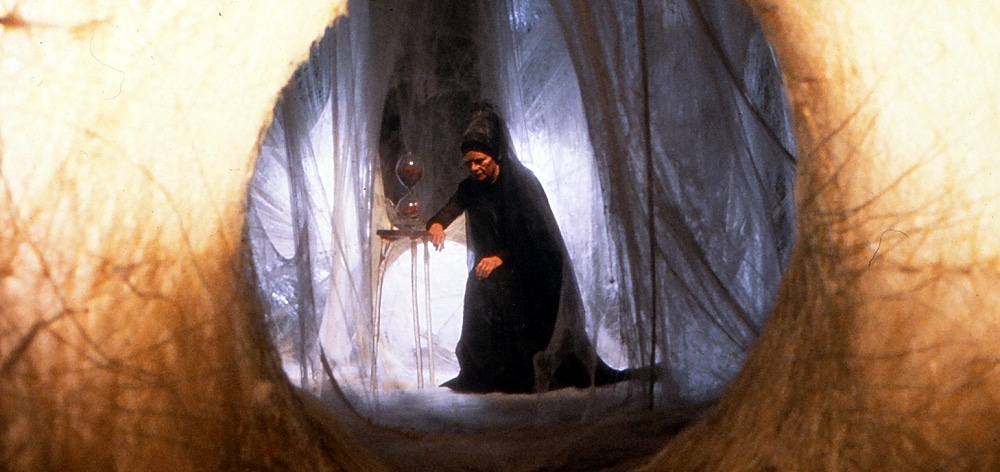
But a long makeup application process was necessary in order for Annis to match, and surpass in appearance, the age of Freddie Jones as Ynyr (the two would appear together again the following year in another sci-fi epic, Dune). A total of 23 prosthetic pieces had to be applied on the actress’ face, head, and body, a tedious process that took six hours to complete.
Nick Maley said that Annis would become grumpier and grumpier as the process went on, both loathing the tedious process and slowly releasing the personality of the Widow of the Web.
In addition to the stunning makeup, the Widow of the Web set piece is a wonder to behold. A cavernous dwelling strewn with endless strands of anciently spun webs, watched over by the giant, crystal bodied spider. It’s a beautiful and threatening sequence as the Widow of the Web sits in a darkened silhouette while the red sand slips through her hourglass surrounded by thick, white webbing.
The stop motion movement of the spider adds a quickened, menacing danger to the scenes, and is gorgeously lit among the darkened cave.
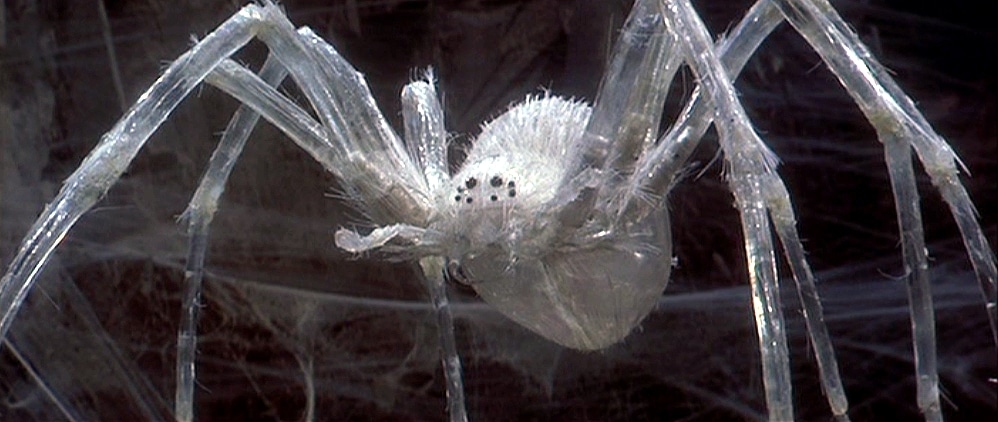
The Widow reveals with her hourglass where the Black Fortress will be, gives the protective sands to the badly injured Ynyr so he may escape the Crystal Spider, and in turn leaves herself victim to the spider.
Ynyr reaches the group just in time to reveal where the Dark Fortress will appear the next day at dawn, and then promptly dies as the remaining red sand runs from his hand. Fearing the distance to the next appearance of the Dark Fortress is too far, one of the men, a Cyclops named Rell (played by Bernard Bresslaw), recommends the group ride Fire Mares, powerful, magic horses that can quickly blaze great distances.
The Fire Mares were 16 Clydesdale horses that were trained for months by stunt coordinator Vic Armstrong in order to be ridden by the actors. Being the largest breed of horses in the world, Robbie Coltrane admitted that learning to ride the horses was both very difficult and scary. The Clydesdales and the production then traveled to Italy to film the Fire Mares scene in the Abruzzi Mountains.
The Fire Mares blaze across air and over mountains to reach the Black Fortress before it has time to disappear.
A battle with the Slayers ensues and more men get killed. As the doors of the Black Fortress close to seal it off from Colwyn and his men, Rell holds the doors open long enough for the men to enter before being crushed, thus sacrificing himself for the cause. Inside, Colwyn and the men escape this trap and that, including a chamber with slowly closing walls lined with sharp, stone spikes.
Colwyn is reunited with Lyssa, and now stands before the Beast.
The time to use the ancient, magical weapon known as the Glaive has arrived.
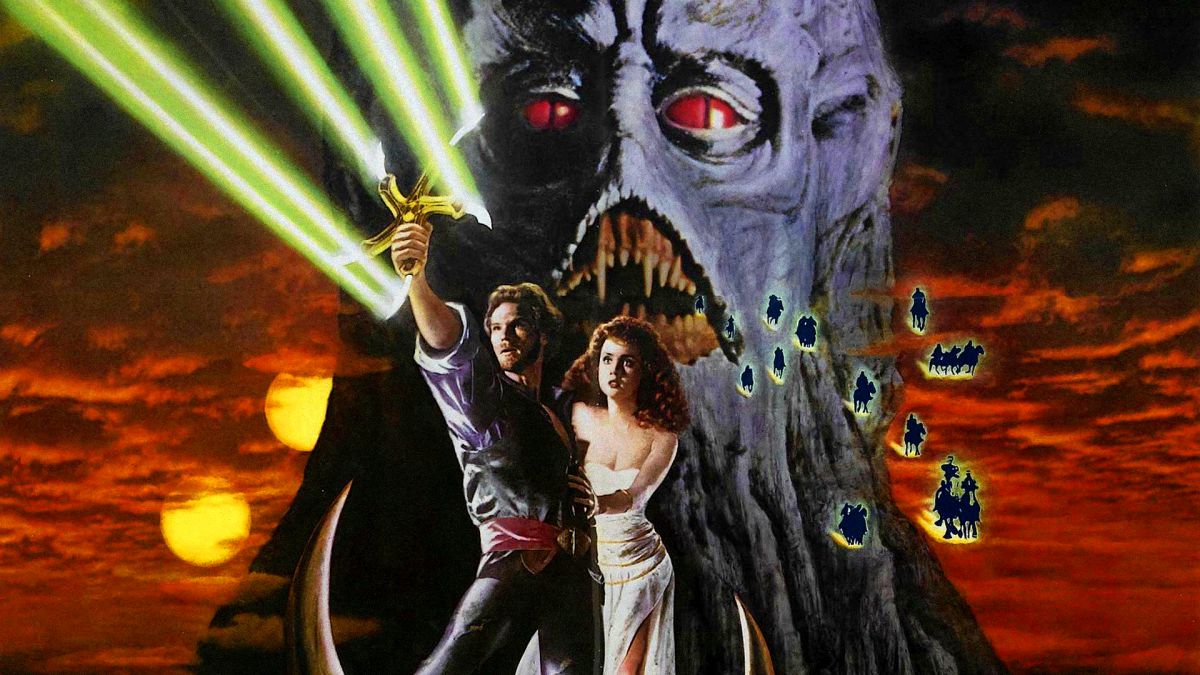
The Glaive was heavily associated with the film’s promotion, even flying across the screen to reveal the Krull title when the movie begins.
This heavy focus on the Glaive is a bit baffling. When all is said and done, it’s just not that cool. It kind of just spins around and does all the work.
At least Luke wielded the Lightsaber in Star Wars. Here Colwyn just throws the Glaive like a Frisbee and watches it work. If he held onto it as he fought the Beast, like a circular saw-like knife, leaping and swinging as he sliced and diced, its effect would have been much stronger. Instead, it’s Lyssa who saves the day, lending her new husband the fire she’s able to create in order to defeat the Beast.
Still, the Glaive remains an iconic image from the film, even showing up in the final battle sequence of 2018’s pop culture extravaganza Ready Player One.
The Beast, on the other hand, is pretty cool and a lot of fun to watch.
With the camera angled up to make the Beast appear very large and intimidating, it looks like a red eyed Creature From the Black Lagoon on crack by way of Roger Corman and Ray Harryhausen.
A female performer was inside the suit controlling the motions of the Beast, while the lungs were inflating bags full of liquid so the creature could be seen breathing, and the liquid seen moving through the chest as it breathed. Nick Maley said the Beast was “the first self-contained animatronic suit,” with controlled eyelids, teeth, and fingers (all 24 of them).
Maley also said he was disappointed with the way the scenes were shot, darkly lit with smoke that hid a lot of these menacing details of the impressive Beast suit. This disappointment is what led Maley to direct all future sequences involving his work.
The promotional campaign for Krull was an all out blitz from the studio designed to build awareness through several different avenues.
Along with the typical commercials, trailers, and posters in cinemas, promotional tie-ins for Krull included a board game and card game from Parker Brothers, a home video game for Atari, and an arcade game.
Fun fact: in December of 1983 (five months after the film’s release), Stop-N-Go, a convenience store chain, had a contest with the winner taking home a Krull arcade game. A pinball machine was also designed with 10 test units built, but production was canceled. There was even a donut tie-in, with the cruller being changed to “The Kruller” and shaped like the Glaive from the film (it was probably just a plain old cruller, but hey, it’s a fun idea).
The oddest promotion of all was an essay contest created by Columbia Pictures with the selected winners getting married while wearing costumes from the movie. Writer and producer Tim Kirk (Room 237), explains in The Moving Arts film journal:
“On a hot summer day in 1983, a dozen couples gathered on a soundstage in Burbank to take part in a group wedding. One after another, they walked past a pair of futuristic soldiers in fanciful armor, down a red carpet flanked by strangers in folding chairs, and up to an altar made of faux stone.” Kirk continues, “They had penned the winning statements describing, as the studio’s press release states, ‘why their Fantasy Come True would be to have a KRULL wedding in Hollywood.'”
The contest and ceremony was a baffling and pricey stunt that garnered virtually zero coverage for the film.
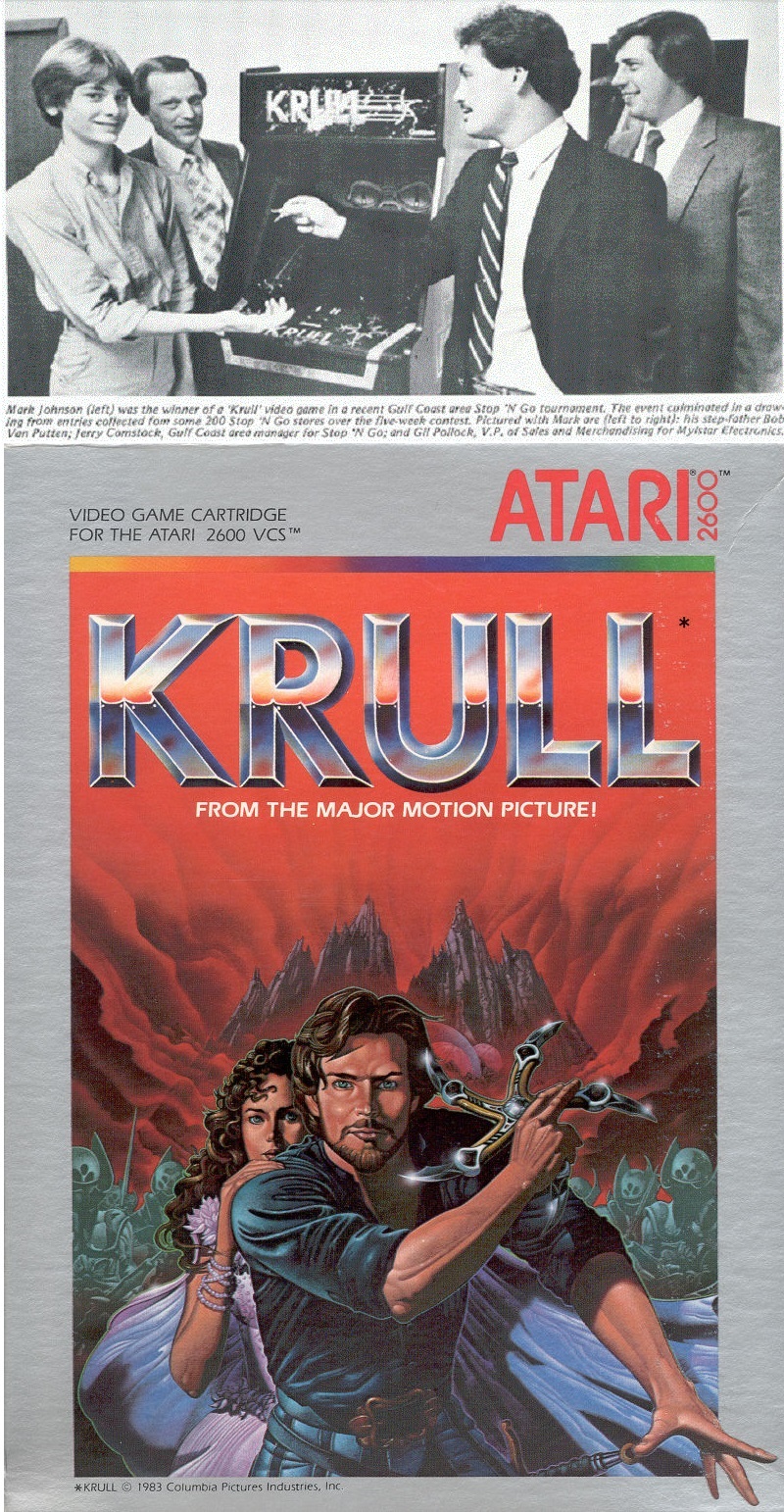
With posters hanging in over 1,200 theaters across the country showing Prince Colwyn heroically standing beside Princess Lyssa holding up the Glaive in front of the menacing Dark Fortress, Krull promised a thrilling sci-fi adventure with a lengthy preface that read:
“Beyond our time, beyond our universe… there is a planet besieged by alien invaders, where a young king must rescue his love from the clutches of the Beast. Or risk the death of his world. KRULL. A world light-years beyond your imagination.”
After the huge sets, the big budget, and saturated promotional campaign, Krull opened as a big summer release on July 29, 1983, in 4th place at the box office with $5.5 million. The opening weekend of National Lampoon’s Vacation, Jaws 3D in its second week, and Return of the Jedi still in 3rd place after 10 weeks at the box office, all beat the heavily promoted sci-fi epic.
Krull would fizzle out at the box office with a $16 million total haul, falling out of the top 10 after just 3 weeks.
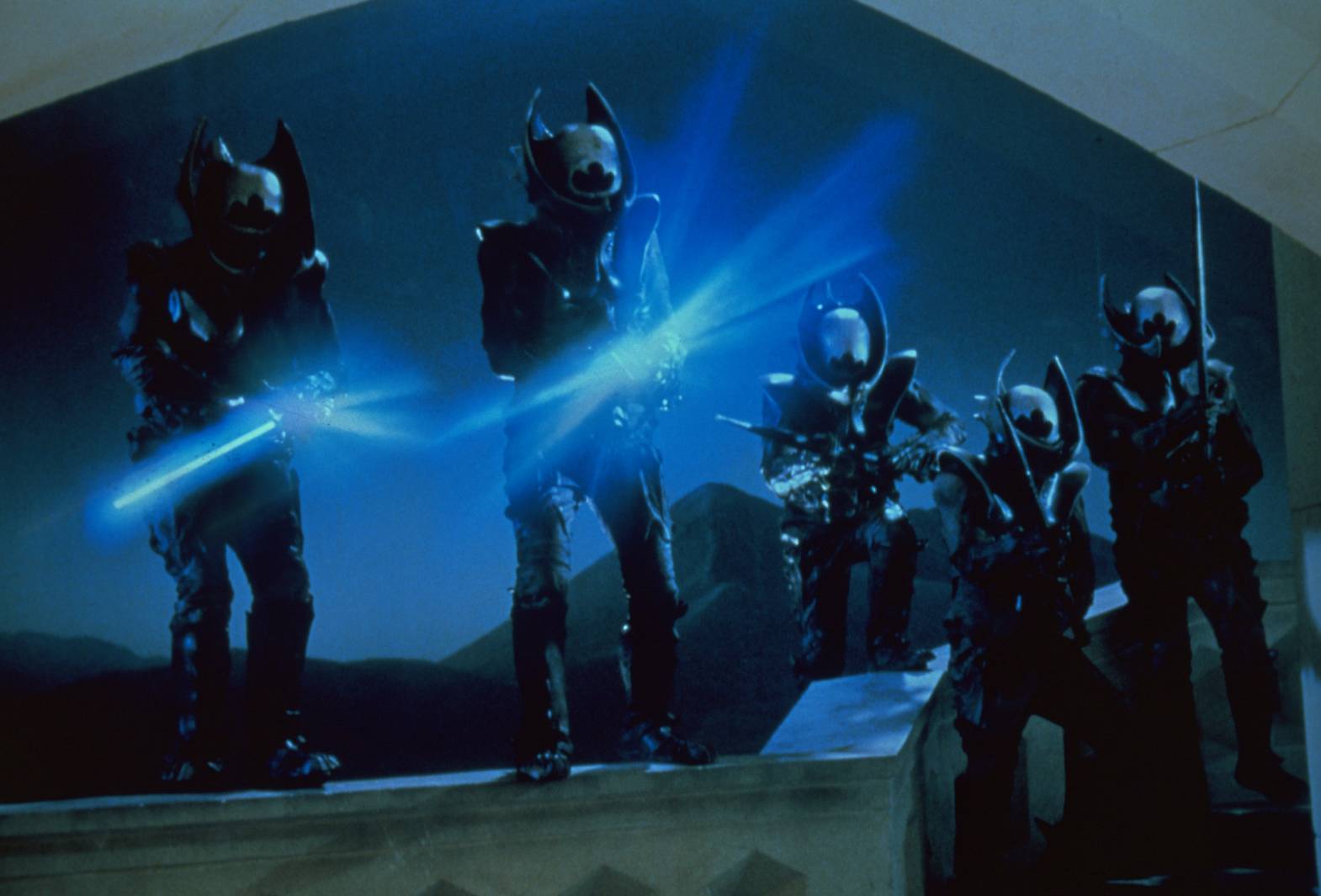
The box office was less than half of the film’s estimated hefty price tag of $40 million. Krull found some success on home video when it was released on Videodisc in March of 1984, staying in the top 15 on the sales charts for 13 weeks. Its VHS rentals didn’t fare as well, lingering in the top 40 for 12 weeks, with most of the time spent outside of the top 20. But over the years on VHS and cable, it slowly found an audience to earn the cult status it has today.
As for director Peter Yates, having two feature films released theatrically, 1983 was both a bittersweet and career highlight year. Krull was a highly publicized flop, one of the most expensive film disasters to date at the time. The other film was The Dresser, a critical winner that earned Yates Academy Award nominations for Best Picture and Best Director (his second after 1979’s Breaking Away).
In turn, it was a bittersweet year for Columbia Pictures as well, who produced both Krull and The Dresser.
When all is said and done, sometimes the world building of a script is enough to overcome a familiar plot and dull dialogue. Sometimes the creativity of practical effects and the imagination that lights a story is enough to become the language of a film. And when this language speaks to convince you that you are dreaming while still awake, and indeed “light years beyond your imagination”, a memorable experience is ignited.
This is the magic of Krull, a box office and critical misfire that has endured for nearly 40 years. Not a bad legacy for the Stinkers Bad Movie Award winner for Worst Picture of 1983.


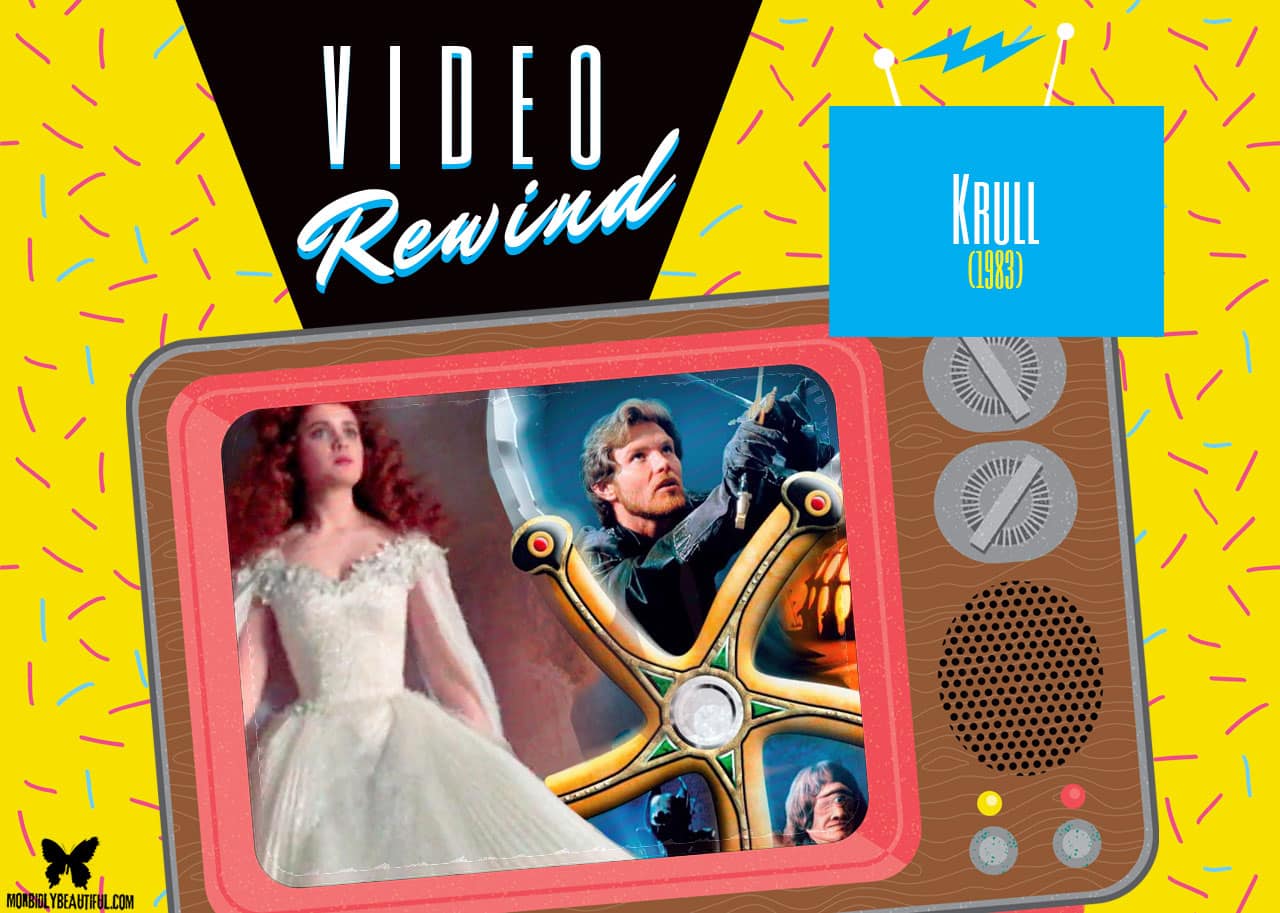
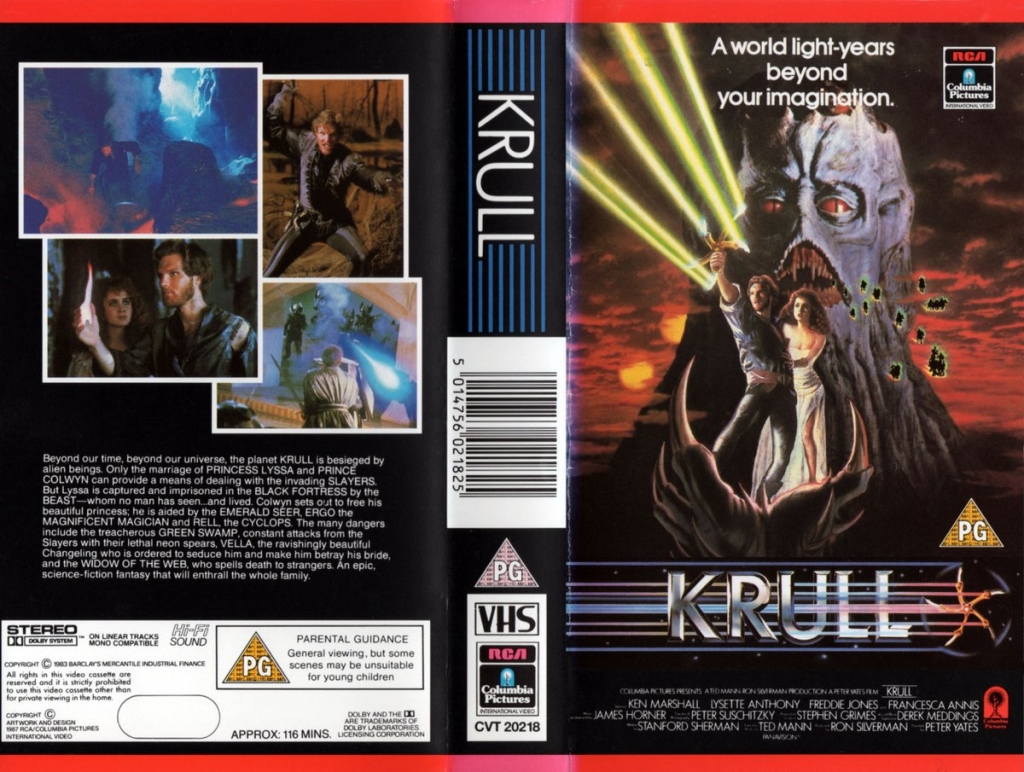
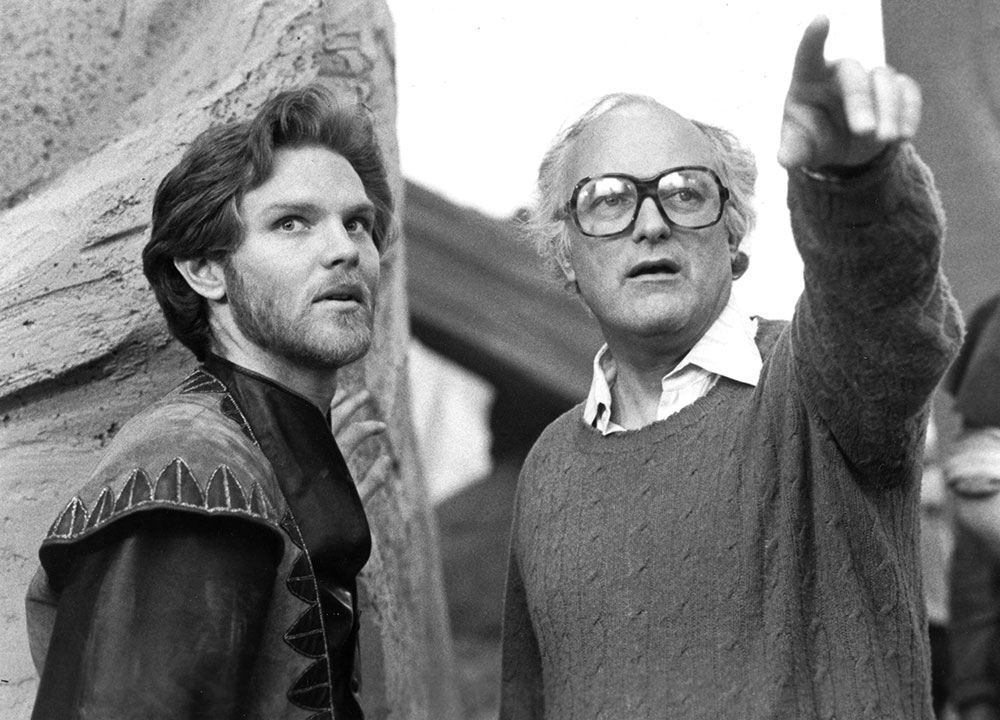
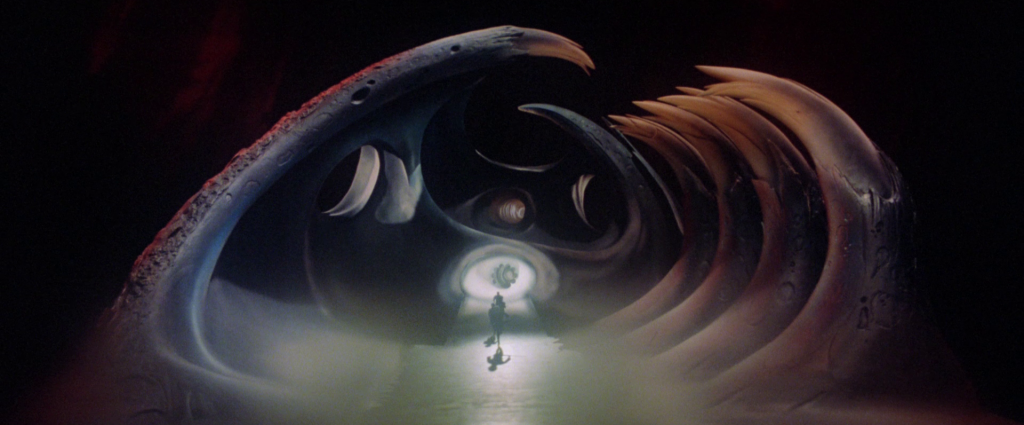


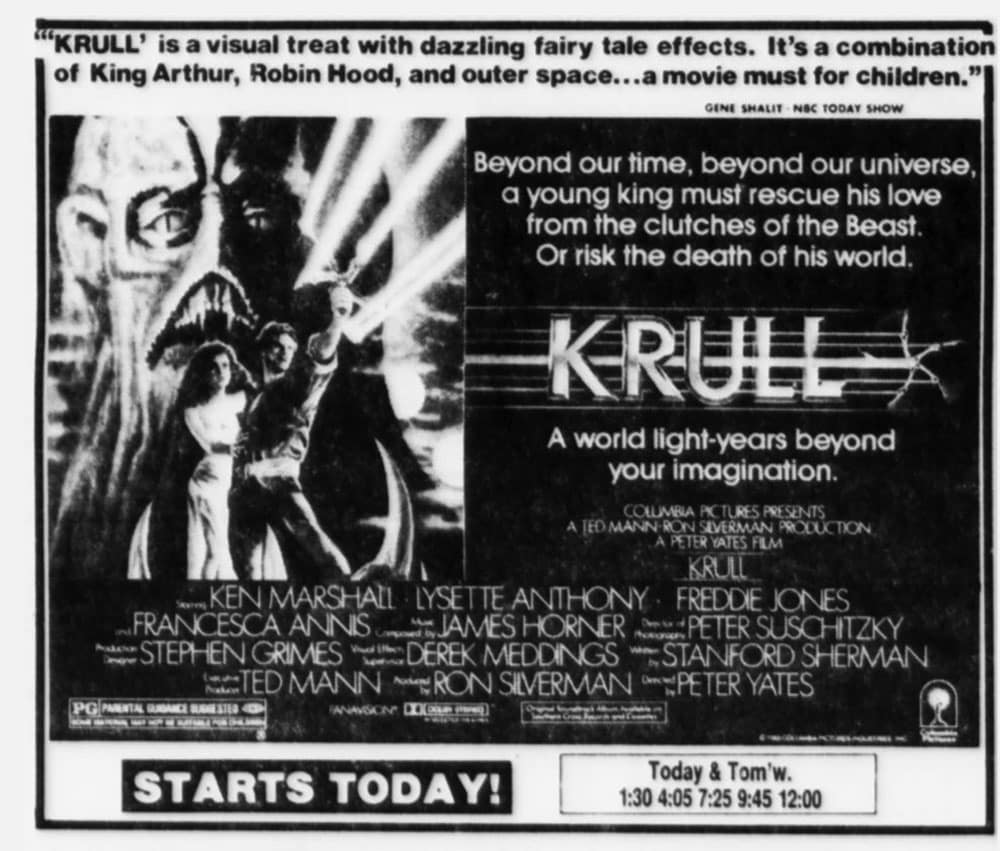
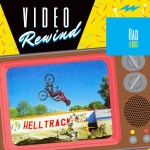








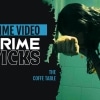


Follow Us!